Mustang: 60 Years
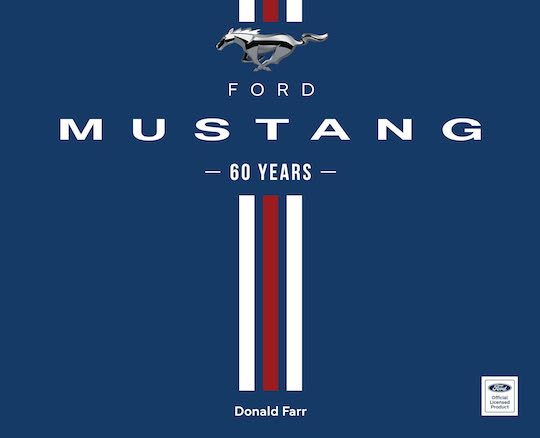 by Donald Farr
by Donald Farr
“Putting the accomplishment into perspective was the fact that the Mustang’s main pony car competitor, Camaro, barely topped 5 million sales between 1967 and 2018, not helped by the fact that the model went out of production for the years 2003–2009. Even Corvette, in production since 1953 (except for 1983) had not reached 2 million sales by 2018.”
By that year, 2018, the Ford Mustang had rung up ten million sales! It bettered its first-year sales target of 100,000 units by a factor of three, and passed two million units before its second year of production. If it’s exclusivity you seek, this is not good news unless you are prepared to drop $300K–400K on the newest pony, the 2025 GTD that can summon 815 hp to reach 200 mph.
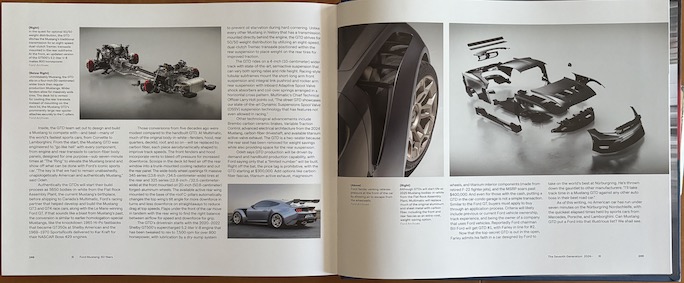
Says Ford president and CEO Jim Farley of the GTD, “This is Mustang reinvented. It’s an underdog project to take on the European racing elite, a flagship, a new supercar for a new era of Mustang.” The target is a sub-seven-minute Nürburgring time which would be a first for an American car.
This 60th anniversary book will bring you up to speed, but in a refreshingly unconventional way: rather than a year by year/model by model approach, Donald Farr covers the 60 years in the form of 60 stories about milestone cars, milestone people, milestone events.
Farr himself had done just that sort of standard model history on the occasion of the Mustang’s 50th and then three years later revised that as Ford Mustang: America’s Original Pony Car (same publisher, ISBN 978-0760352144). It was advertised as “the definitive visual history of the Ford Mustang,” a claim convincingly substantiated by the fact that Farr has been writing about Mustangs since 1977 and run half a dozen model-specific magazines.
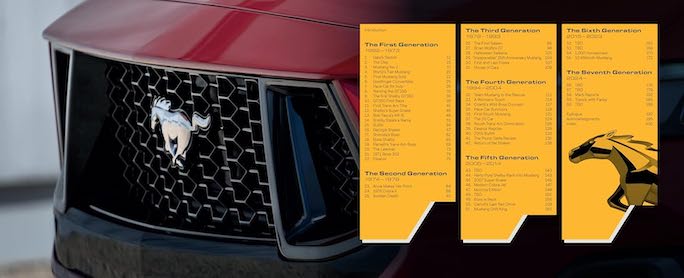
Farr also still owns the 1966 Mustang GT his grandpa had bought new, which is neither here nor there except that it gives him the lived experience of what is at the core of this new book and its new approach: everybody has a Mustang story, so let’s write that book. This was to be a retirement project so it’s a good thing that publisher Motorbooks was able to get him to do it now—because it seems he’s not planning to retire from his Mustang magazine gigs anytime soon.
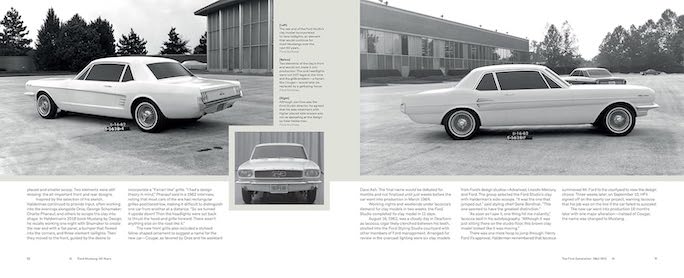
Which one to pick?? And there were four other clay models that August in 1962 to consider.
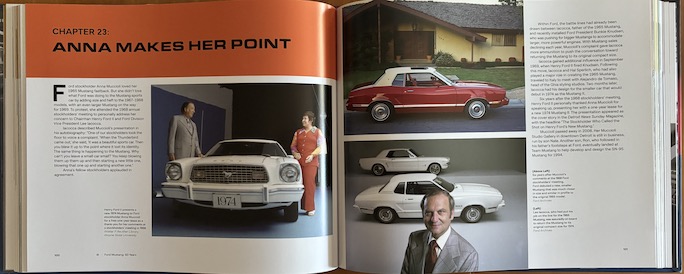
A perfect example of a story that needs to be told: the fellow on the left is Ford chief Henry Ford II, no surprises here. The lady across from him is a Ford stockholder and Mustang owner who had voiced her disappointment over the Thunderbird and Mustang getting ever bigger (“Why can’t you leave a small car small?”) at a stockholder’s meeting. Ford rewarded her engagement by giving her a free one-year lease. That meeting was in 1968, the car in this photo has a 1974 front plate. Why the gap? The first of the smaller Mustangs was the Mustang II—and it took six years to do.
Presented in 12 x 10″ landscape format this hardcover is in typical Motorbooks fashion a lot of book for little money, and smartly designed (also typical: lazy typos). As a sort of highlight reel the book showcases key building blocks of the story; and while its purpose is not the definitive resolution of arcane points of history it does manage to include bits that even well-informed readers can use to recalibrate their take on oft-told story points that have lost some precision in the telling, such as the circumstances of “Mustang No. 1” being sent to a dealer strictly for display only to then be sold by accident to an extremely persuasive customer. Although, even Farr isn’t explaining, at last not here, why that fellow, a bachelor airline pilot with disposable income who really didn’t need a deal, let Ford talk him into returning this history-making car after two years of ownership in exchange for nothing more than a new model that is now worth—nothing.
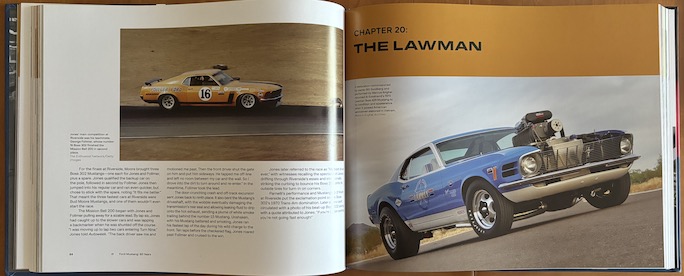
“The Lawman” (r) seems an odd choice for talking about safe driving to American servicemen.
Even re-reading the well established origin story of the first sketches being dashed off in a few nighttime hours at the kitchen table leading to a car that would forever change automotive history and popular culture cannot fail to get the blood flowing! Special editions, unique owners, tuner cars, sporting successes, pace cars, movie cars, Carroll Shelby et al—everything that materially advanced the car’s story is here and serves to explain why the Mustang is currently the longest-produced Ford nameplate and its fifth-best selling model—and not retiring any time soon.
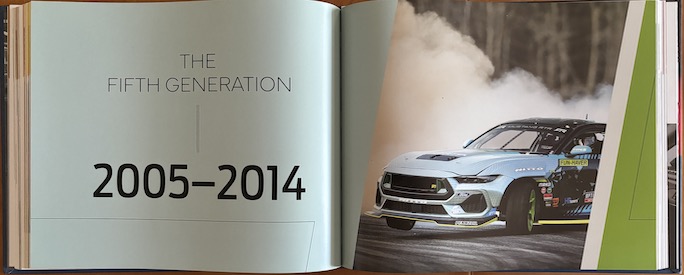
Look closely: the front wheels are cocked left but the right/outboard wheel is off the ground. Aerodynamically speaking, a highly unusual situation, unless . . .
The Foreword is by four former and present Mustang chief engineers; how cool is that? Index.
Copyright 2024, Sabu Advani (speedreaders.info).


 RSS Feed - Comments
RSS Feed - Comments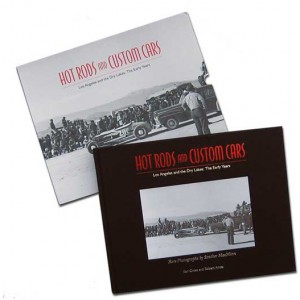

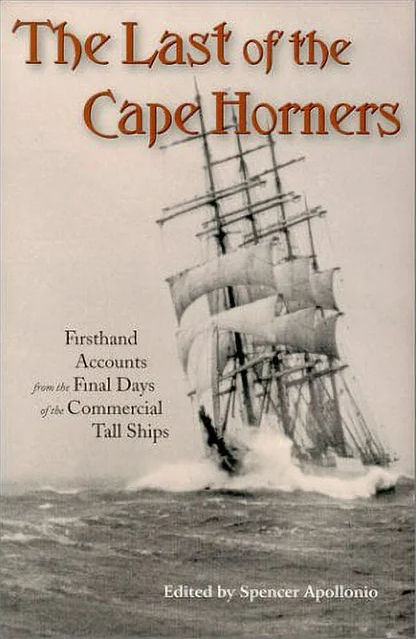












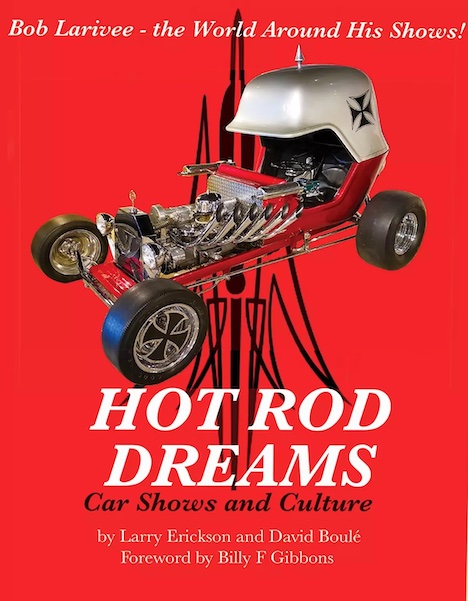
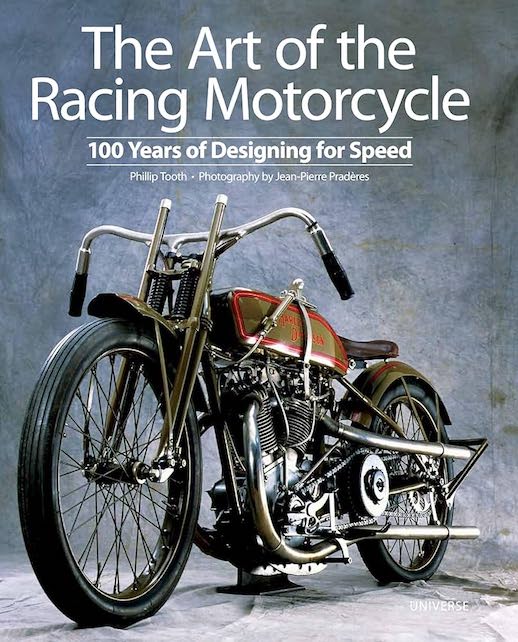
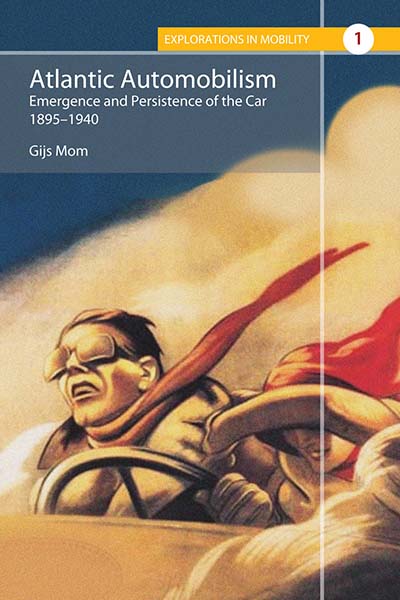




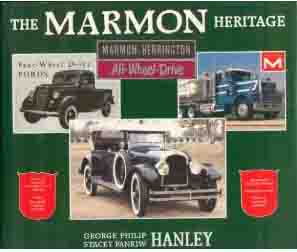
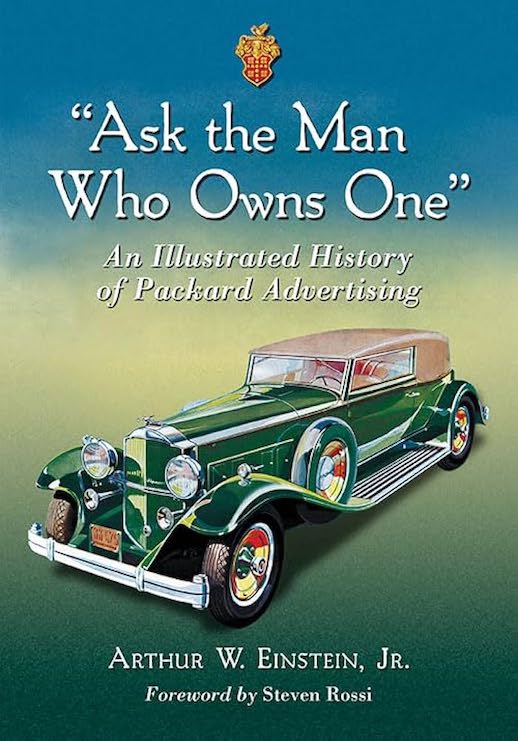
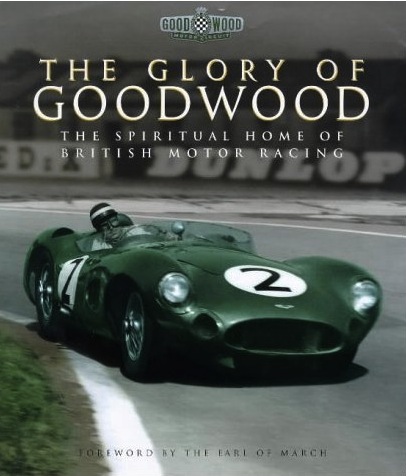



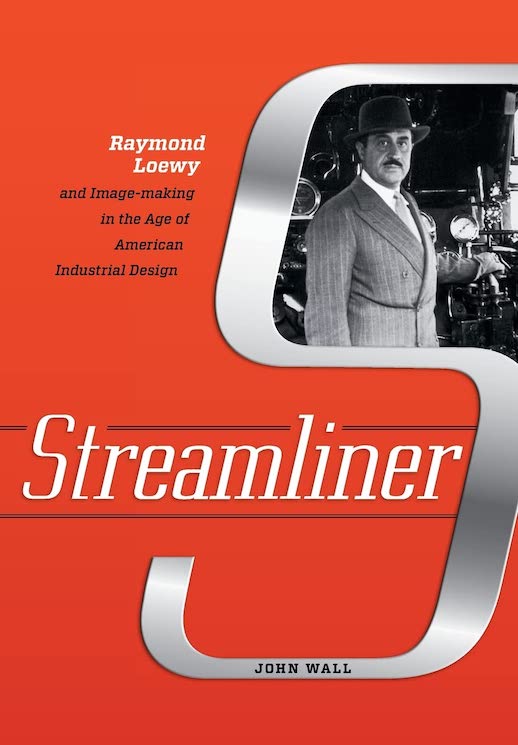

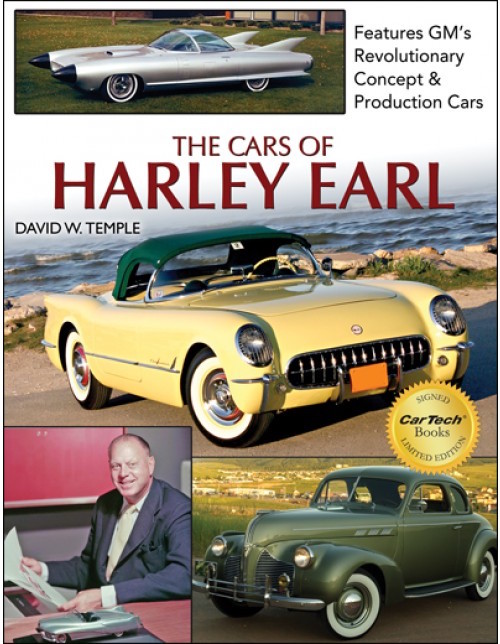





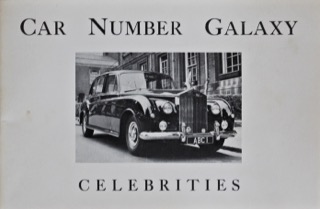














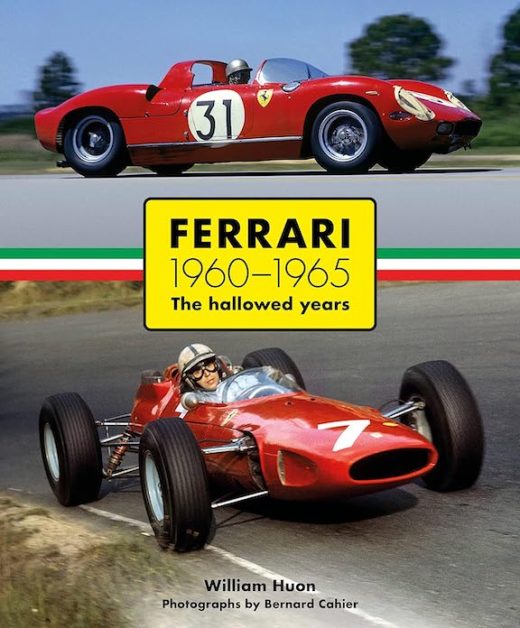





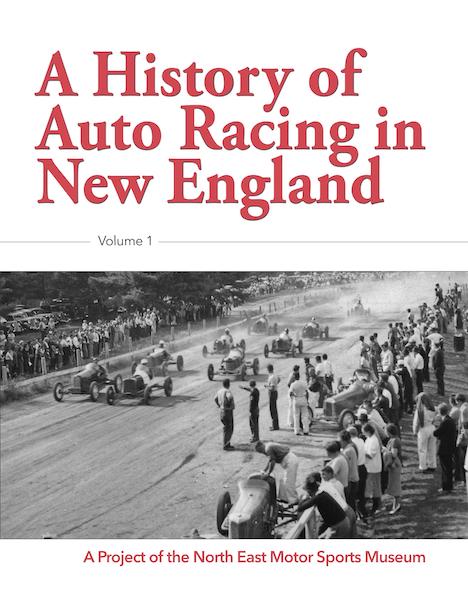



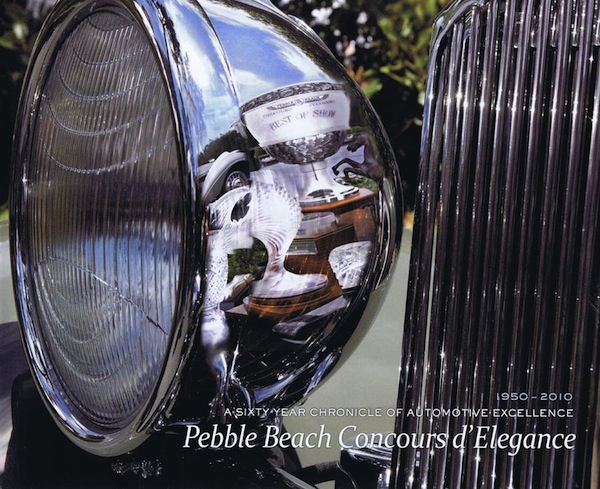









 Phone / Mail / Email
Phone / Mail / Email RSS Feed
RSS Feed Facebook
Facebook Twitter
Twitter